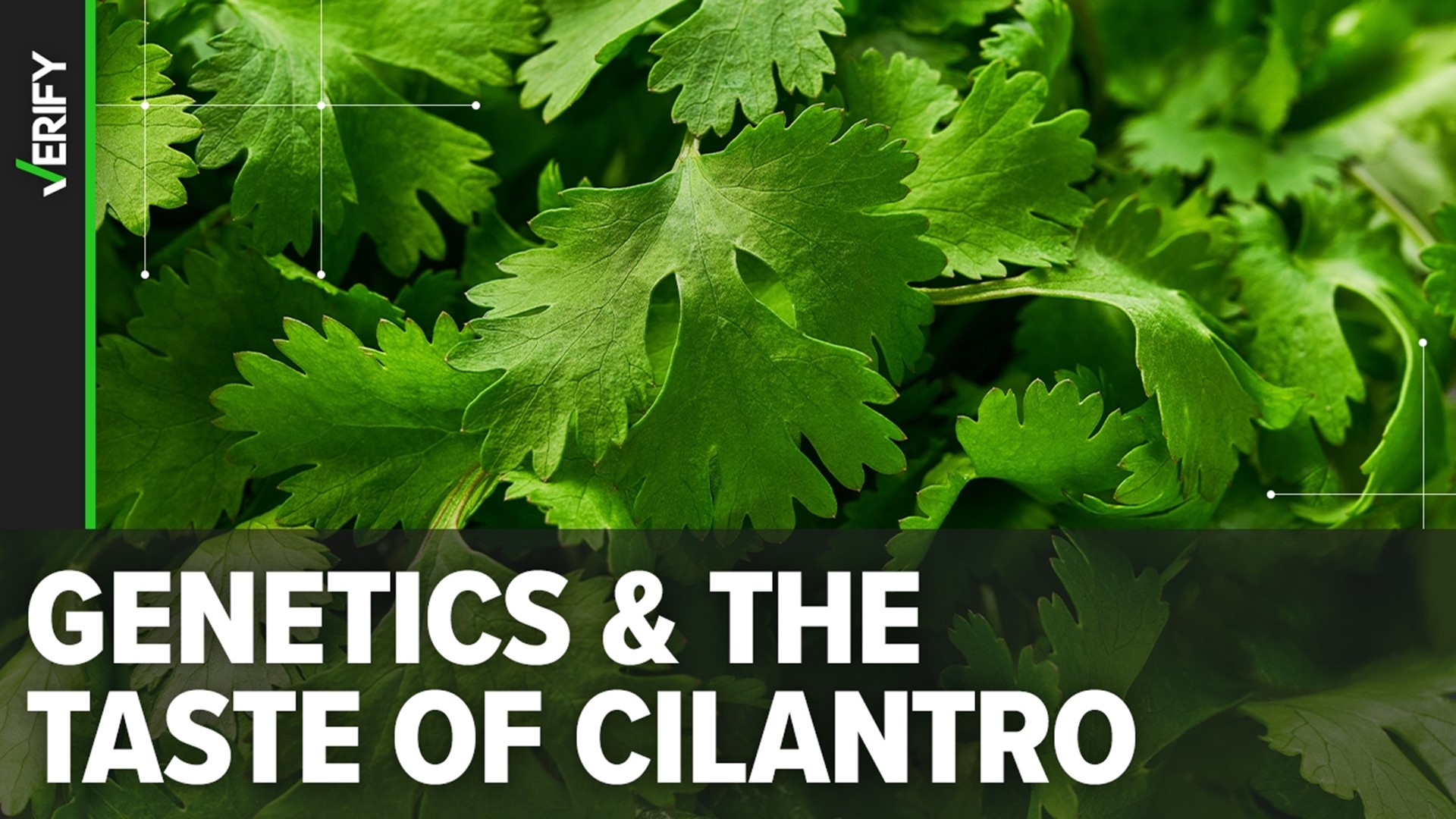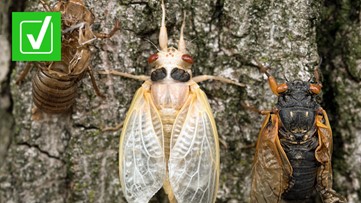Cilantro is commonly used as an ingredient in a variety of dishes, however, many have a strong distaste for the flavor of the herb. In a study of 1,639 people aged 20 to 29 years old, 14% of women and 10% of men disliked cilantro.
Many online discuss how cilantro has a soapy taste, with some attributing the cause to genetics. VERIFY viewer Jean reached out via text to ask if it's been scientifically proven that cilantro can taste differently depending on the person.
THE QUESTION
Do genetics influence how cilantro tastes?
THE SOURCES
A study published in Consciousness and Cognition
Joanne Cole, PhD - University of Colorado
THE ANSWER
Genes can contribute to why cilantro tastes like soap to some people, but many factors impact a person’s food preferences.
WHAT WE FOUND
Numerous studies show genetics can influence the way certain food items, like cilantro, taste and smell. However, other factors such as geography and exposure can also impact preference for cilantro.
A study published in Chemical Senses in 2012 tested 286 sets of twins, 502 individuals (484 caucasian/88 other, 459 female/113 male). By looking at twins, they tested the heritability, which is how much genes account for differences of traits, associated with the like/dislike of food items.
Twins are typically used for heritability studies in order to compare genetic factors. Identical twins have very few differences in DNA, while fraternal twins share about 50% of their DNA. If a trait is more similar in identical twins than it is in fraternal twins, it's likely the trait has to do with genetics.
Researchers asked the participants to rate the smell and flavor of cilantro based on pleasantness. Heritability study results range from 0 to 1, with 0 meaning the trait comes from environmental factors, while a 1 points to genetic differences. The researchers placed cilantro at a 0.39 for odor and 0.52 for flavor when it comes to genetic factors.This means that 39% of the variability of the trait in a population finding cilantro odor to be pleasant has to do with genetic differences, and 52% for flavor. In their results, the researchers also found associations between bitter receptors, which are sensors in the body that make foods taste bitter, and herbs, like cilantro.
The study's authors determined a link between finding a pleasant taste in cilantro and three genetic variations, which are identified with a special system of numbers and letters. A genetic variant is a permanent change in a DNA sequence.
Those variations are known as: TAS2R50, TRPA1, and GNAT3. The first variant - TAS2R50 - is known to signal a bitter taste. The second variant - TRPA1 - is also a signaling component for taste that is associated with both bitter and sweet recognition. The third variant - GNAT3 - works as a signal for strong chemicals found in foods. The study highlights these genetic variations to help explain the divisive opinions about cilantro.
The genetics company 23andMe also conducted a study utilizing research from their users. They found a variant - OR6A2 - that is better at detecting aldehydes, an organic compound found in cilantro that’s often used as an ingredient in perfumes and soaps.
While these studies show a link between certain genetic variations and the “soapy” taste of cilantro, other factors could be at play, which is why this claim needs context.
“Genetics is a small part,” said Joanne Cole, PhD, an assistant professor in the Biomedical Informatics department at University of Colorado School of Medicine. External and environmental factors can also have an impact on food choices. Circumstances like how a person is raised, learned behavior, or food availability can lead to someone choosing one food over the other.
A 2012 study from the Department of Nutritional Sciences at the University of Toronto also noted geographical differences with disliking cilantro. The researchers collected data from 1,381 participants and found that the percentage of those disliking cilantro was “1% for East Asians, 17% for Caucasians, 14% for those of African descent, 7% for South Asians, 4% for Hispanics, and 3% for Middle Eastern subjects.”
This study's authors explained that a possibility for these geographical differences could be due to frequency of exposure. For example, they noted that people from cultures who typically use cilantro in their cuisines, like the Middle Eastern, Hispanic, and South Asian groups, disliked cilantro the least.
Other sensory factors can also influence the taste of a food item. In addition to taste and smell, a review published in Flavour by a researcher at the University of Oxford discusses multiple studies that point to elements of appearance, like color, impacting flavor perception. One of those studies, conducted by the Department of Experimental Psychology at the University of Oxford shows how different cultures can even predict different flavors based on color. The researchers showed colored beverages to men in the UK and in Taiwan led to differences in flavor expectations. For example, a blue drink was perceived to be mint flavored in Taiwan, but raspberry flavored in the UK.
The influence of color depends on what “taste/flavor expectations a color signifies in the mind of the observer” and “how close, or far, the actual tasting experience is” compared to what the observer predicted.
For those that dislike cilantro, it’s possible to be converted into liking it by crushing the herb before eating it.
“Cilantro has many attributes which make it worthwhile to overcome any aversion to it,” says Neha Vyas, M.D. in a Cleveland Clinic blog post. The herb offers these health benefits:
It can help treat nausea
It’s a natural potent antioxidant
It’s a source of iron, magnesium, and manganese
It’s leaves have an antibacterial effect against salmonella












